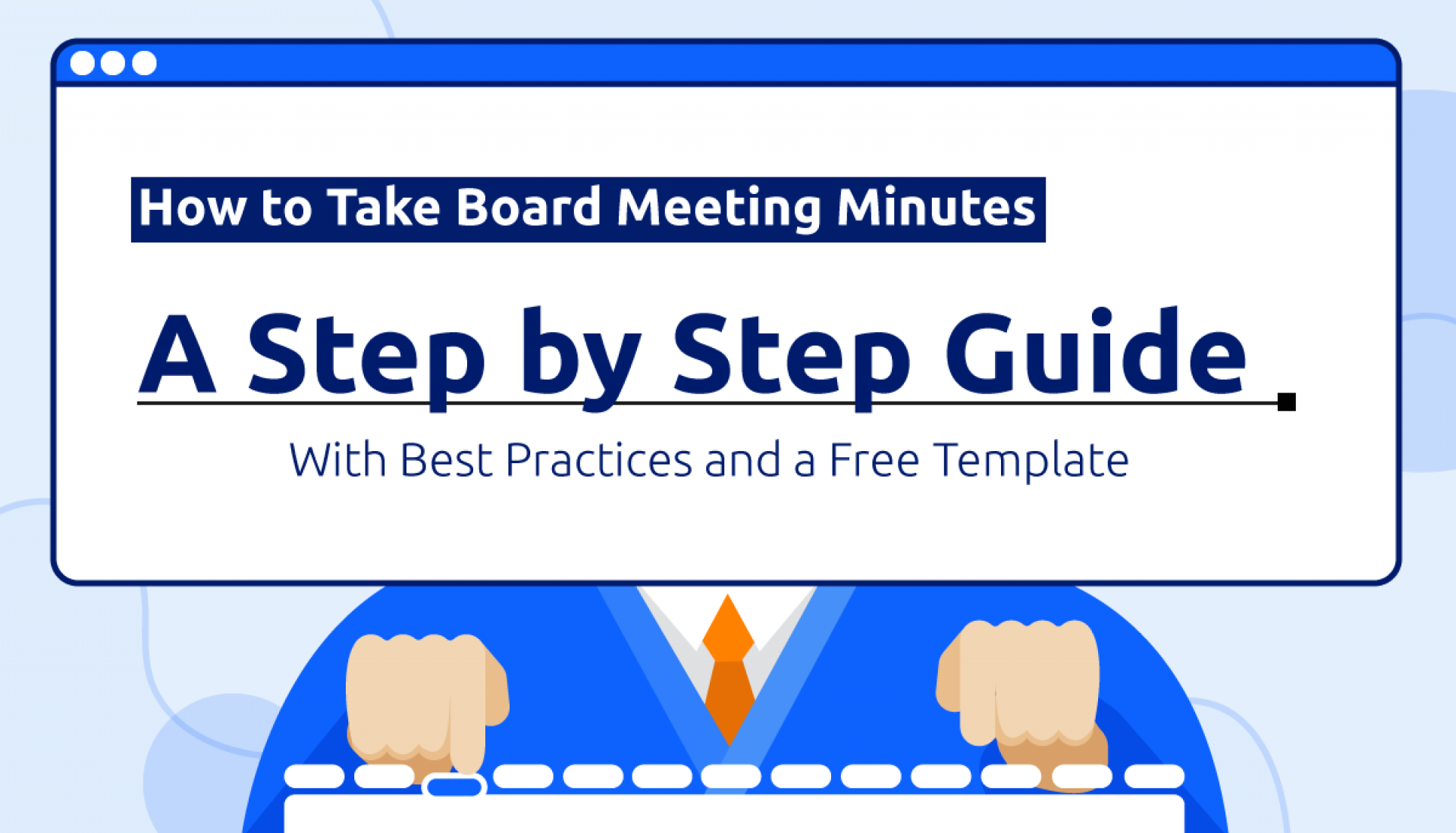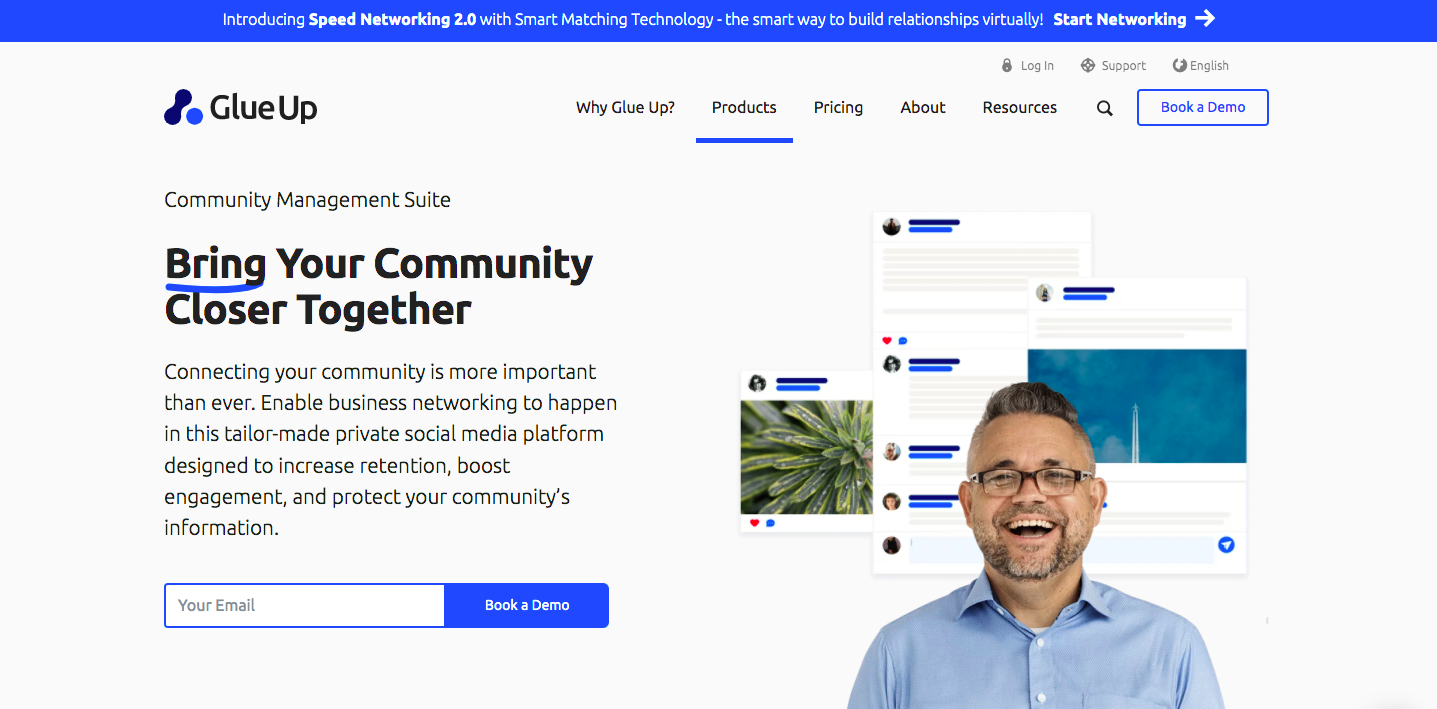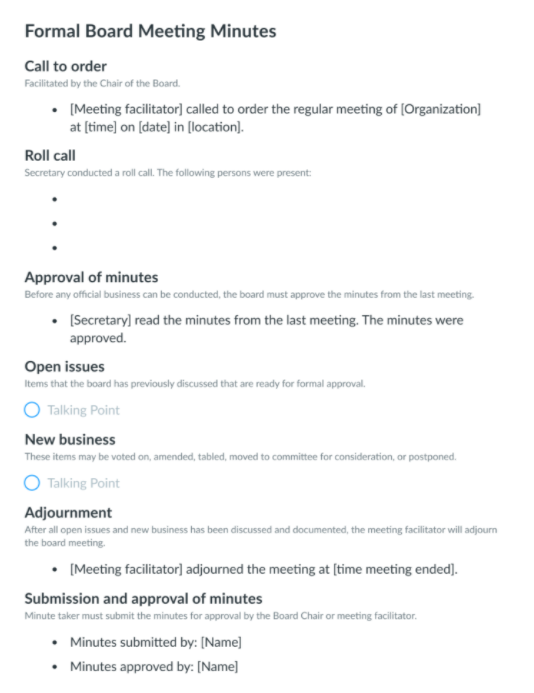
It is essential to keep records of every meeting to learn what the board has accomplished over time. Board meeting minutes are legal records you need to store safely, necessary should organization members ask for them.
Writing minutes during or after a meeting requires a lot of time and effort. A skillful individual has to take in all the information and summarize it to highlight key decisions and action items.
In this article, we will guide you on taking effective minutes for everyone to know what was discussed, decisions taken, and agreements made.
Quick Reads
- What Are Board Meeting Minutes?
- Importance of Board Meeting Minutes
- What to Record in Board Minutes?
- What Not to Record in Board Minutes?
- Best Practices for Board Meeting Minutes
- 7 Key Mistakes to Avoid in Board Minutes
- Use a Template for Board Meeting Minutes
What Are Board Meeting Minutes?
Meeting minutes serve as the written record of items discussed at the meeting, including decisions and recommendations. As a written transcript, you can also utilize it to inform team members who failed to attend or keep track of decisions and action items needed in the future.
Importance of Board Meeting Minutes
They are important because they involve the board’s short and long-term goals. The board can check all objectives and goals mentioned for future reference–to understand and measure the progress in reaching them. Meeting minutes are also essential because they justify making certain decisions while legally protecting the organization.
What to Record in Board Minutes?
Board minutes contain a meeting overview, date, time, and location. In addition, the president, directors, officers, and other attendees are also stated. It should also document the presence of a quorum, if applicable.
Mentioning the approval of the previous minutes is a must. The most crucial part of the minutes is accurately recording board members' actions during the meeting.
What Not to Record in Board Minutes?
Giving too much information in board minutes should be avoided as it could mean legal risks. Staying away from discussions and direct quotes by board members is a must as courts may misinterpret what they truly mean. When statements in the minutes are taken out of context, it could harm an organization’s reputation or lessen credibility due to legal liability.
Best Practices for Board Meeting Minutes
Adhering to some best practices can keep meetings running smoothly. First, there should be a clear agenda with all discussion topics for the board meeting. Along with relevant documents, they should be distributed to members in advance to help them prepare any questions if any.
The agenda can help you create a template for the meeting minutes, including the company’s name, date, time, and meeting location.
If there are late arrivals or early departures, remember to note them. In line with this, mention the presence of a quorum–with 2/3 of board members around.

7 Key Mistakes to Avoid in Board Minutes
1. Failure to Understand Legal Standards and Internal Requirements
Board secretaries should understand board meeting minutes and become familiar with the rules. This is because those notes are considered legal documents. In case the organization gets involved in a lawsuit, the official record of actions will be necessary.
Corporations are required to take meeting minutes in most states. The company can use a board meeting minutes template to maintain consistency and provide uniformity. Once done, they should be kept on file for at least several years.
It is a legal requirement for some states to involve the rules for reaching a quorum. It involves the minimum number of group members required to make an official decision. Legislative bodies, corporate shareholder meetings, and corporate board of directors often follow this. In addition, you need to mention in the meeting minutes if a quorum is present.
Attendance and other legal issues should also be discussed, including decisions the members made to solve them. If you aren’t familiar with the law, check with a corporate attorney the steps you should take when recording important information to get proper guidance.
2. No Plans Made Ahead of Schedule
Minute-taking helps you focus and listen effectively. Choosing what to note down increases understanding of the topic or information at hand.
However, remember that successful meeting notes need ample preparation to succeed. The Chairman of the Board or the CEO should come up with a meeting agenda in advance that they should send to the group or your community before the meeting to help everyone come to the meeting on the same page.
Read the agenda carefully to understand the meeting’s flow and discussion items. It would be best to discuss the plans for the meeting with the CEO. Doing this can keep the discussion on topic and on time.
Refer to the agenda and develop an outline for the meeting notes. Add headings for all items and leave space for other notes. They could be personal preferences from the meeting, including insights, next steps, and goals.
3. Lack of Basic Information
As an official record, the meeting notes should include what happened, the names of attendees, and other essential details like meeting location and other supporting information.
You can check meeting notes best practices, and these are the following items to include:
- Date and time of the meeting
- Names of the attendees
- Purpose of the meeting
- Agenda items and topics discussed
- Other action items
- Next meeting date and place
- Supporting documents required
Make sure to record attendance accurately, which will contain names, job titles, and reasons for attending the meeting. When members fail to participate, they can still stay in the loop and keep abreast of what they missed. Their absence from this meeting will also become part of the public record.
4. Producing Too Specific Minutes
Board meeting minutes should be an easily digestible document that contains the summary of points, decisions, and actions discussed.
When you compile the minutes together, you can put a higher focus on the results. Record the length of discussions and summarize results without getting into too much detail.
The secretary should be neutral at all times and avoid any personal comments. It’s important to be straightforward by sticking to the facts.
4. Producing Too Specific Minutes
Board meeting minutes should be an easily digestible document that contains the summary of points, decisions, and actions discussed.
When you compile the minutes together, you can put a higher focus on the results. Record the length of discussions and summarize results without getting into too much detail.
The secretary should be neutral at all times and avoid any personal comments. It’s important to be straightforward by sticking to the facts.
5. Use of Vague Language
The minutes should be specific to allow everyone to know exactly what happened. When voting occurs, write the names of those who abstained or any conflict of interest.
When you record all the decisions and steps to take, it’s essential to use clear and simple language. It should summarize the major points of what occurred at the meeting.
For example, if a product release is discussed at several points in the meeting, the best move is to have one section that sums up all of the related decisions or actions.
6. Inaccurate and Incomplete Recording
Meeting discussions tend to be so fast that you might fail to get the correct information. However, accuracy is important considering that board meeting minutes are official legal transcriptions
To ensure the accuracy of meeting minutes, you need to transcribe the discussion after recording. These legal transcriptions allow participants to keep track of all critical decisions and help them follow the agenda. Also, they can be archived and serve as a reference when necessary to come to a conclusion.
Under Federal law, the “one-party” consent rule states that it is legal to record a conversation when one party gives consent. Ask permission to record a meeting first before doing so. After this, decide on how you can safely record the sessions.
If you’re not allowed to record, refer to the board packet that contains the meeting agenda, executive summary, and other relevant data to help fill in the gaps.
7. Delays in Sharing Board Minutes
Once you’re done with the meeting minutes compilation, the board can start to review them first before you move to the next one. It’s important to seek approval of the last meeting minutes at the start of every new meeting to make everything official.
You will often find the last meeting’s minutes in the board packet distributed before the meeting. These materials are often confidential, so CEOs and secretaries should ensure that the information is distributed to the correct parties.
Do you want to get vital information to stay producing when taking notes? Evernote can automatically save notes online and sync them to all your devices.

Step by Step Guide for Taking Minutes for a Board Meeting
Step 1: Board Meeting Preparation
When taking meeting minutes for a board meeting, you might want to consider a different approach when recording. You can ask for a copy of past meeting minutes and discuss the other formats you can use with the board president.
Step 2: Agenda Serves as an Outline

The date and time of the meeting should appear on the meeting minutes, followed by the names of attendees. Remember to check all decisions made during the previous meeting before reading the meeting agenda. After this, the meeting agenda can serve as an outline. You can use each agenda item as a sub-topic to add specific notes.
Step 3: Record the Board Meeting

When recording a meeting, you can type them out or write them longhand. To maintain structure, you can use a meeting minutes template. During a board meeting, it is crucial to determine the information you need to record and ways to present it.
Effective minutes meeting for a board meeting include:
- Date and time of the meeting
- Name of all attendees and absentees
- Changes to previous meeting minutes
- Items added to the current agenda
- Mention if a quorum is present
- Motions accepted or rejected
- Voting and outcome of it
- Actions agreed to be taken
- Next steps
- Items to work on
- New business
- Open discussion or public participation
- Next meeting session’s date and time
- Time of adjournment
It’s important to discuss every item in detail and add information in the bullet points. Briefly mention the action taken by the board for each, together with the rationale to justify their decision. You can also summarize major arguments to encourage others to accept new points of view.
Be objective in every discussion item to avoid biases that may interfere with evaluation. An excellent way to do this is by staying away from adjectives and adverbs whenever possible. Make sure you use simple, clear language to avoid legal complications that can harm the organization.
Since the minutes are an official and legal document of the board meeting, it’s essential to record discussions that accurately reflect the actions and intentions of the board directors that make them legally liable. After the session, remember to write a formal record while everything is still fresh in your mind.
Step 5: Official Record of Board Meeting Minutes
Review the meeting agenda to help put together all documents and reports required. Check all actions, motions, votes, and decisions to gain clarity. If there are items that seem unclear, add a note to clarify. Edit and polish the writing record to make the minutes easy to read and understand. Lastly, you can add meeting handouts to the final copy that can serve as support during the meeting.
Step 6: Sign, File, and Share Minutes
Meeting minutes become official once the board secretary signs them. They can also require the president’s signature.
Keep in mind that you must follow the organization’s protocols for storing minutes. Prepare backup copies either in print or by using a hard drive.
After getting the president's approval, the secretary should share them online or in print.
Valuable Tips for Taking Effective Board Meeting Minutes
- Prepare a board minutes template in advance
- Check attendance as people arrive
- Understand board of directors meeting minutes policies
- Do introductions and stress the importance of the meeting
- Record actions, considerations, and decisions
- Ask for clarification as necessary
- Write clear notes and stick to key facts
- Obtain copies of all reports
Common Mistakes to Avoid in Taking Board Meeting Minutes
- Failure to mention a quorum’s presence
- Vague board action description
- Distributing sensitive information
- Delays in distributing bod minutes after sessions
- Slow meeting minutes approval from past sessions
- Not managing documents efficiently
- Unsigned documents that fail to serve as legal records

If you want to boost board engagement and build a solid team, book a demo of Glue Up’s Community Management Software. It has a community custom hub where everyone can socialize, share insights, and discuss ideas designed to increase retention and protect your community’s information.
Step 7: Storing the Meeting Minutes to Serve as Reference
Attendees should have access to saved meeting minutes after recording and storing them. Ask the President or secretary if they need to print hard copies so you can give them to staff for filing purposes.
Use a Template for Board Meeting Minutes




